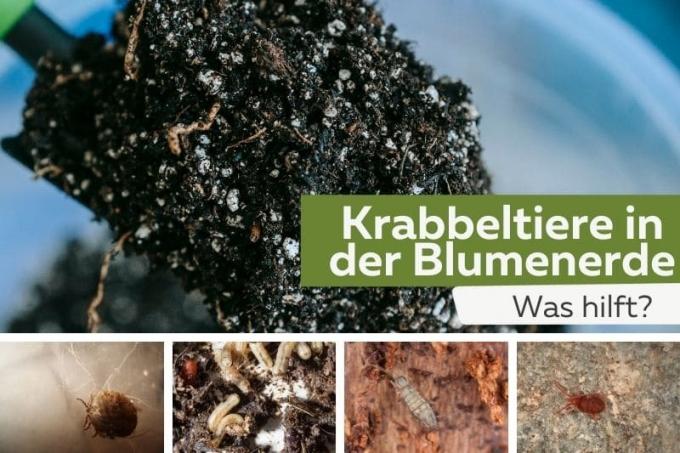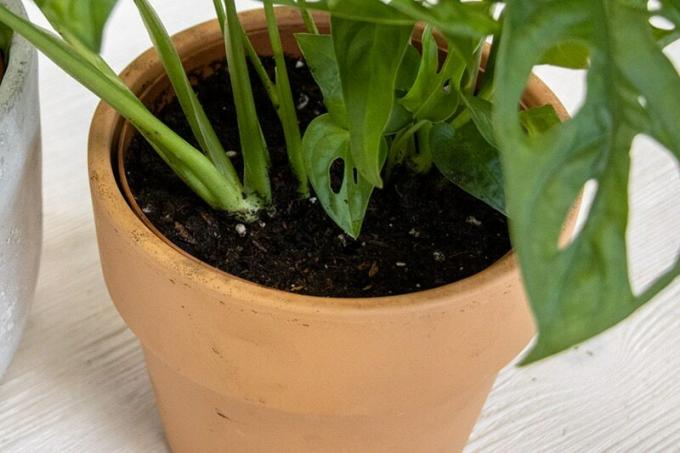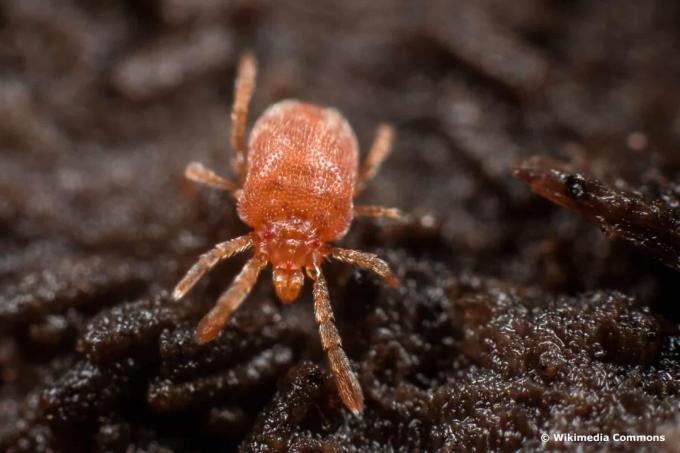
When small creepy-crawlies appear in the potting soil, it not only causes disgust. Some of the insects can harm the plants. This article explains which animals are involved and how they disappear again.
In a nutshell
- Insects in the potting soil only become noticeable when they occur more frequently
- larvae of different insects are most commonly found
- getting rid of them can't be easy
- Depending on the species, allow the soil to dry out or submerge completely under water
- chemical agents usually not necessary
Table of Contents
- Discover crawlies
- sciarid larvae
- mites
- springtails
- Other larvae of insects
- frequently asked Questions
Discover crawlies
The first animals are usually found by accident. When watering flowers, they suddenly crawl over the ground. One rarely recognizes an infestation of the plants themselves potting soil. For this, it would have to be pests on the one hand and a very large number on the other. Not all insects that can be found in the potting soil harm the plants. Most live there temporarily and disappear on their own. It is therefore not always necessary to fight or drive away all the little animals.

A notice: Crawling creatures in the potting soil sometimes damage plants, but they are harmless to humans and animals.
sciarid larvae
Fungus gnats (Sciaridae) themselves are small, black, winged insects. The adult animals do not harm the plants, but they multiply very quickly. The larvae live in the potting soil and feed on any plant matter. If they can no longer find any dead material, they begin to eat away at the roots of the plants.

Combat:
- Keep potting soil as dry as possible, larvae only develop when there is sufficient moisture
- nematodes can be bought as beneficial insects against the larvae
- Yellow stickers catch the mosquitoes before they can breed
- Repot the plant, removing as much old soil as possible
- Put garlic cloves in the ground or water the plant with garlic decoction
mites
On the one hand, mites are quite easy to recognize, they always have eight legs and no wings, on the other hand, the individual species are very difficult to distinguish from one another. Therefore it is almost impossible to recognize whether it is a matter of pests such as root mites (Rhizoglyphus) or beneficial insects such as predatory mites (Gamasina) acts. As a rough guideline, beneficial mites can live anywhere in the soil, while root mites sit right on the roots and suck plant juices from there.

Combat:
- Predatory mites fight other mites, so do not take immediate action if it could be predatory mites
- Possibly repot plants
- mites sit on the roots, cutting back the roots
springtails
Springtails (Collembola) are easily recognized by jumping around on the ground. Basically, they do not harm the plants in the pot. At least as long as they can still find enough dead plant material. If there are too many small creepy-crawlies in the potting soil, it is still necessary to reduce them. For this you can put the plant in a larger bucket full of water for some time. The insects eventually swim to the surface of the water.

A notice: After treatment, drain the water well so that the roots of the plant do not rot.
Other larvae of insects
There are other insect larvae that can stay in the potting soil. This applies above all to your own compost soil. This can usually not be prevented, but the larvae rarely cause damage. Larger larvae can simply be collected from the soil and returned to the compost.
frequently asked Questions
In most cases, they are dragged indoors either with the potting soil or with the plants themselves. If you use your own garden or compost soil for repotting, you must also expect small crawling animals in the potting soil.
That depends on how mobile the animals are and how close together the potted plants are. Theoretically, flying insects can go anywhere. It is different with those who can only walk or crawl. In the case of infested indoor plants, it always makes sense to move them to a separate room.
The only thing that helps is to sterilize the earth. This is done by steaming, baking in the oven or heating in the microwave. However, it should be borne in mind that many useful microorganisms in the soil can also be destroyed in the process.


